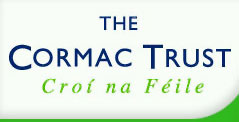The N.B.A. Is the First League to Begin Standardized Cardiac Screening
Jolted last fall by the death of one player and stung by the controversy surrounding another, the National Basketball Association is for the first time requiring standardized cardiac screening for every player.
The new rules, developed over the past year, were sent to teams this summer but were not publicized. The move is viewed as a significant step toward preventing heart-related deaths on the court. The N.B.A.’s program is the most extensive among the four major American sports leagues.
”The standardized and systematic strategy that the N.B.A. is instituting is very reasonable and important,” said Dr. Barry J. Maron, a cardiologist who served on a four-person panel that helped the league devise the program. ”They should be given substantial credit for this initiative.”
League officials said that such an initiative had long been discussed. But they were spurred to act by two disturbing events last fall. On Oct. 15, Jason Collier, a 28-year-old center for Atlanta, died of an abnormally enlarged heart.
Relatives said Collier had been unaware of any heart problems.
Two weeks earlier, the Chicago Bulls traded center Eddy Curry, then 22, to the Knicks because of concerns that he might be predisposed to a potentially fatal heart condition. The Knicks, after consulting numerous cardiologists, concluded that Curry was not at risk.
Doctors and league officials concede that the new protocols would not necessarily have prevented Collier’s death, or averted the awkward controversy surrounding Curry. The new rules do not require that a player be barred from playing based on his test results, for example. In the case of Curry, experts with divergent philosophies might still reach different conclusions about whether he should continue playing.
But the league’s decision to mandate a number of tests — which exceed the American Heart Association’s 12-point program — should help.
”It’s far beyond what we do for college athletes and for high school athletes,” Dr. Craig Asher, a cardiologist at the Cleveland Clinic in Weston, Fla., said. ”It should pick up most of the main causes of sudden cardiac death in athletes.”
The N.B.A.’s screening process will include a physical examination, blood work and three heart tests: an electrocardiogram, a resting echocardiogram and a stress echocardiogram. Players will also be asked to provide personal and family medical histories to determine predisposition to certain heart problems.
The tests will be administered annually and must be completed before a player can participate in training camp. This year, most players will be tested Oct. 2 or 3, before camps open.
Neither Major League Baseball nor the National Hockey League has a uniform leaguewide heart screening program. The National Football League mandates a cardiovascular exam, including an EKG, as part of annual physicals, but does not require an echocardiogram unless other test results suggest that one is needed.
Previously, the N.B.A. allowed its 30 teams to set their own parameters for cardiac screening. The Curry controversy illustrated the need for a uniform approach.
”Every team had a sensible program in place,” Joel Litvin, the N.B.A.’s president for basketball operations, said. ”There was nobody who we thought was deficient. But we thought it made sense, after talking to our experts, to have one standard set of tests that we all used.”
John Paxson, the Bulls’ general manager, expressed concern last fall that Curry might be at risk for hypertrophic cardiomyopathy, or HCM, the most common cause of sudden cardiac death in young athletes. Curry had two bouts with an irregular heartbeat with the Bulls.
Both Paxson and Maron, who is the director of the Hypertrophic Cardiomyopathy Center at the Minneapolis Heart Institute Foundation, advocated that Curry undergo a genetic screening test to help rule out HCM. Curry’s refusal led to the trade.
The N.B.A.’s new policy does not call for genetic testing, and Maron said he did not push for it.
Paxson declined to comment on the new program. Through a team spokesman, the Knicks’ physician, Dr. Lisa Callahan, expressed support for it.
Litvin said the expert panel that helped develop the new protocols could be consulted to help interpret test results.
”But you’ll never eliminate the possibility of a disagreement on how doctors read test results,” he said.
Heart concerns were prominent across the league last season. Four players needed heart surgery to correct various abnormalities — Ronny Turiaf of the Los Angeles Lakers, Fred Hoiberg of the Minnesota Timberwolves, Zeljko Rebraca of the Los Angeles Clippers and Robert Traylor, who last played for Cleveland in 2004-5.
One of every 200,000 to 300,000 young athletes suffers sudden cardiac death each year, Asher said. But studies estimate that 1 in 500 people have HCM. Not all of them are in the high-risk group for sudden cardiac death, but athletes with HCM are generally advised to avoid impact sports.
The tests mandated by the N.B.A., particularly the electrocardiograms and echocardiograms, should detect almost all cases of HCM, said Asher, who is on the advisory committee for the Hypertrophic Cardiomyopathy Association.
Once a player receives a diagnosis of HCM, the more difficult task is determining the level of risk and whether he should continue playing.
”There will be many athletes that will fall into a gray zone,” Asher said. ”I think it’s going to get messier, because we’re still learning a lot about how the heart changes with sports, and we’re going to have more people like Eddy Curry and Reggie Lewis, where we’re just not certain what the risk is.
And in the end, there’s not always a gold-standard test to say that you do have the disorder or you don’t.”
By Howard Beck & Michael S. Schmidt (The New York Times, September 17, 2006)


